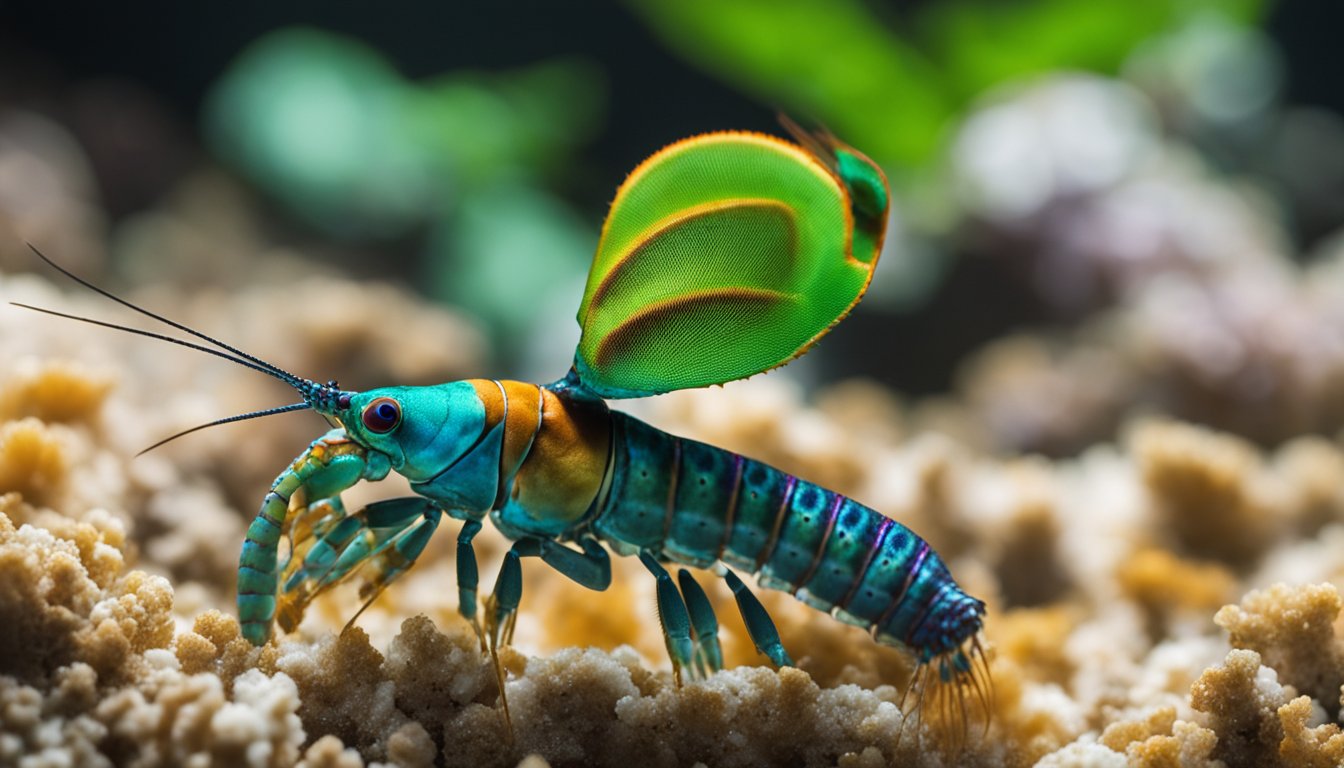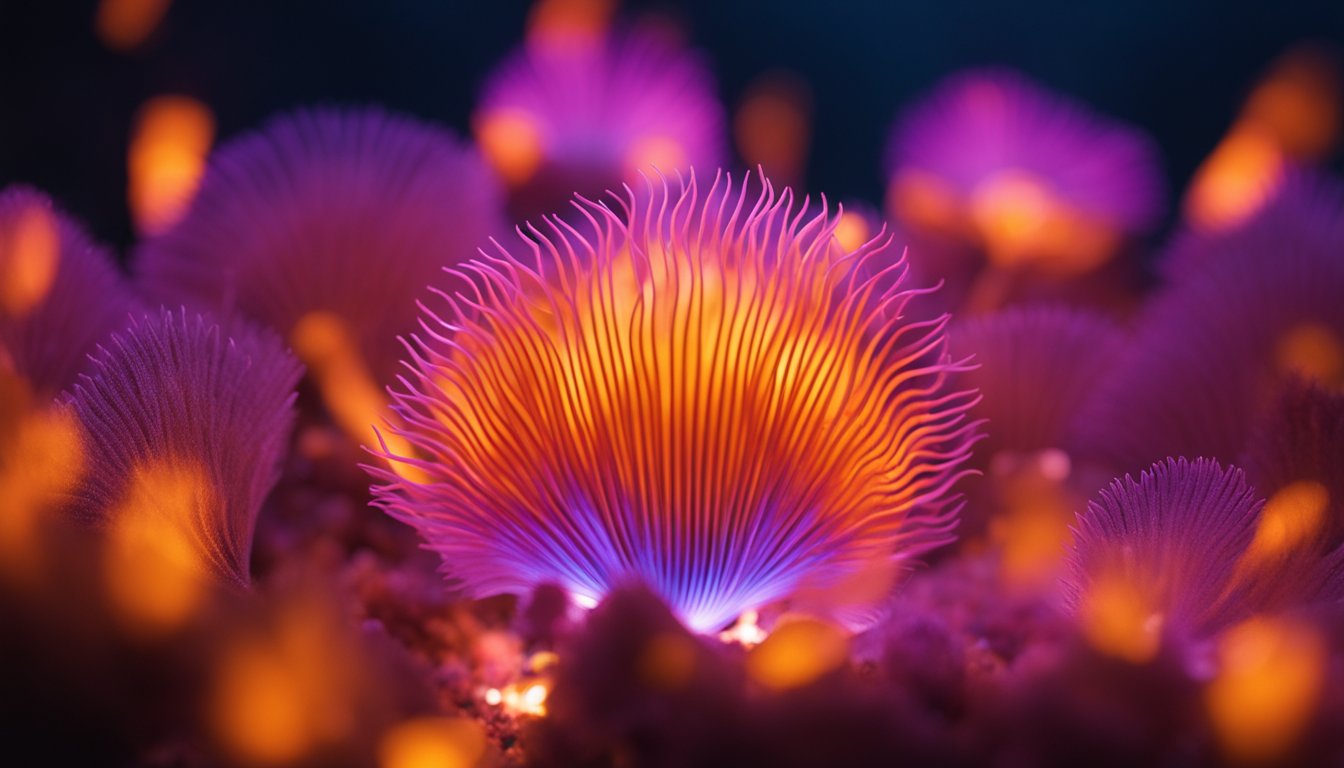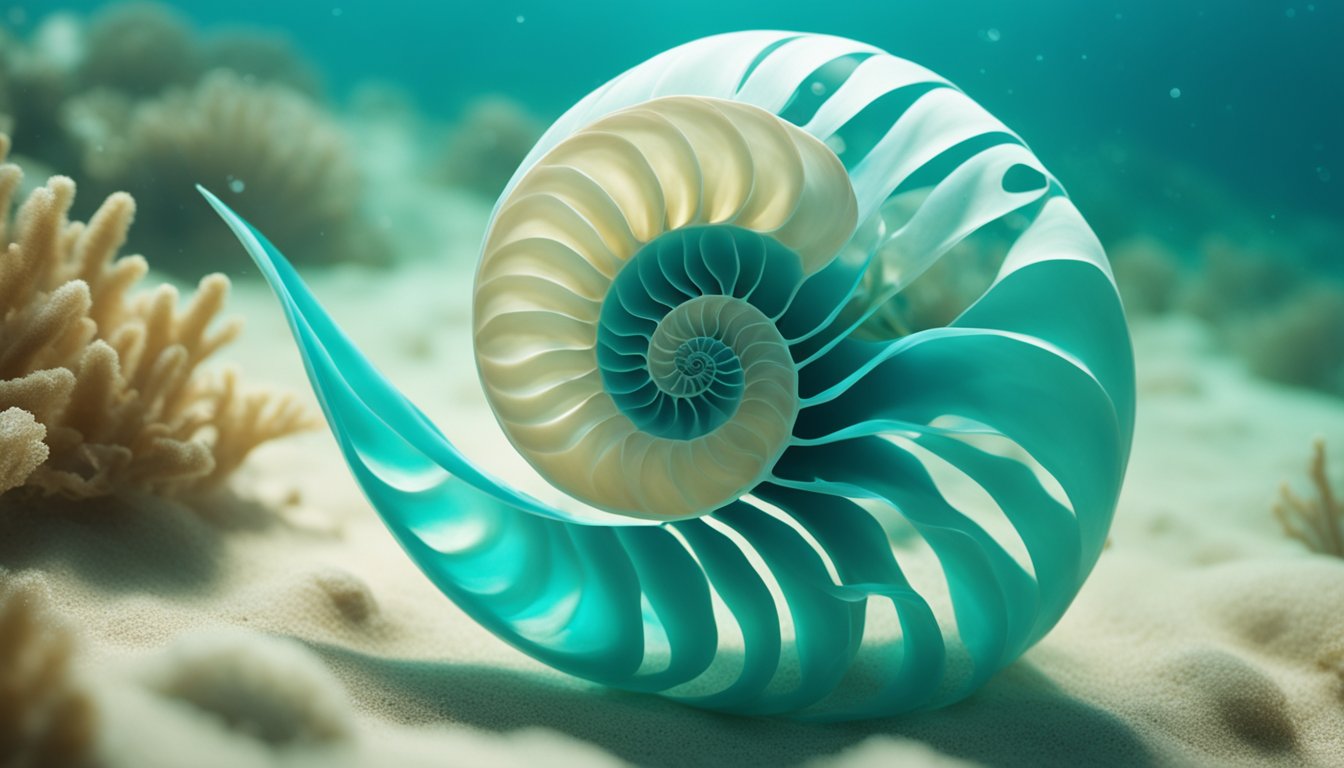Imagine we’re embarking on a journey to the deepest, darkest parts of the ocean.
Far beneath the waves, where sunlight barely reaches, there lives a unique and captivating creature: the Vampire Squid.
Its name might make us think of spooky legends, but in reality, this squid is not a bloodsucker or a monster from a tale.
Instead, it’s a shy and elusive animal that has adapted to life in the deep sea in some pretty amazing ways.

Now, let’s picture this: the Vampire Squid is a bit like a superhero of the sea because it can do things that no other squid can.
It glows in the dark and can turn its cape inside out to hide from predators. How cool is that?
They have the largest eyes in comparison to their body size of any animal in the world, which helps them see in the murky depths.
Living up to 3,000 feet underwater, these squids are the only known living animals in their own scientific order, which is a fancy way of saying they’re one of a kind!
When we learn about Vampire Squids, we uncover secrets of the underwater world that usually remain hidden.
We find out how life can thrive in places we once thought were too harsh.
They remind us of the vast diversity of life on our planet and how much there is still to learn.
Join us as we discover more about these mysterious sea creatures that twirl through the depths of their dark, watery realm.
What Is a Vampire Squid?

The Vampire Squid is a unique and enigmatic creature that invites us to explore the wonders of the ocean’s abyss.
With its cloak-like webbing and reddish eyes, it’s easy to see how it got its spooky name, but there’s so much more to learn about this gentle marine animal.
Anatomy and Appearance
Draped in a velvet-like cloak of webbing, the Vampire Squid’s eight arms are connected by a stretchy membrane, which adds to its otherworldly look.
They’re not bloodthirsty hunters; in fact, these squids are small, usually about 30 centimeters long when they’re all grown up.
Their scientific name is Vampyroteuthis infernalis, which translates to “vampire squid from hell,” but it’s really just a nod to their gothic style, not their personality.
Their large, globular eyes shine like rubies in the low light, and they can turn them black to hide better in the deep dark.
Like a mini light show, they have bioluminescent spots all over their body!
Habitat: Depths of the Ocean
Let’s dive deeper into where we can find these fascinating creatures.
Vampire Squids call the midnight zone of the ocean home — we’re talking an impressive 600 to 900 meters below the surface!
It’s pitch-black down there, and the pressure is intense, but our squid friends are perfectly comfortable.
They drift in the darkness where other animals would have a tough time because there’s very little oxygen.
But not to worry — Vampire Squids have developed special ways to make the most of what little oxygen there is.
Isn’t it amazing how life finds a way to thrive in even the most challenging environments?
Life of a Vampire Squid

As we dive into the shadowy world of the deep sea, let’s explore the intriguing life of the Vampire Squid.
These mysterious creatures have adaptations that are as peculiar as their name, thriving in depths where few others can.
Diet and Hunting
Our friend the Vampire Squid has a unique way of finding food in its dark home.
It uses long, sticky threads called filaments to capture tiny bits of organic matter that drift down from the ocean’s surface, a rain of nutrients known as “marine snow.” Unlike other squids, it doesn’t chase after its food.
Instead, it drifts and waits for its meal to come to it, a bit like a spider in a web.
Reproduction
When it comes to starting a family, Vampire Squids take things slow.
They can carry several batches of eggs inside their bodies, releasing them slowly over time.
What’s really cool is how they care for their eggs—eggs are attached to the underside of the Vampire Squid’s body, and our dedicated parents gently waft their fins to keep fresh water flowing over them.
This ensures their young get all the oxygen they need to develop.
Adaptations for Deep Sea Survival

In the deep blue sea, vampire squids have developed remarkable adaptations to thrive in an environment where few others can.
Let’s dive into the specific features that enable these mysterious creatures to survive in such extreme conditions.
Bioluminescence: Glowing in the Dark
In the perpetual darkness of the deep sea, we might wonder how any creature could possibly see.
Well, vampire squids have a fascinating solution: bioluminescence! This means they can produce their own light.
On their bodies, they have special organs called photophores that emit a soft, glowing light. This isn’t just for show, though.
By flickering this light on and off, they can confuse predators or attract mates.
Imagine having the ability to glow in the dark anytime you want—pretty cool, right?
Jet Propulsion: Escaping Predators
Now, let’s talk about how vampire squids can make a quick getaway. When threatened, they can use a special method of swimming called jet propulsion.
By drawing water into their bodies and then forcefully shooting it out, they’re able to zip away from danger. It’s like having a built-in jetpack!
This method is not only fast but also helps them save energy, which is important when you live in a place where food isn’t always easy to find.
Scientific Research and Discoveries

Exploring the secrets of the Vampire Squid, scientists have uncovered fascinating information about its life in the deep blue.
We’re using innovative techniques to study these mysterious creatures and understand their place in the ocean’s web of life.
Study Techniques
Let’s take a peek at the cool tools we use to study the Vampire Squid!
Imagine us as underwater detectives, using things like remote-operated vehicles (ROVs) to sneak a peek into their deep-sea homes without disturbing them.
These squids are super sensitive to light, so we use red lights, which they can’t see, to watch them in their natural habitat.
It’s like using night vision goggles during a camping trip in the pitch-dark forest!
Conservation Status
We’re like guardians of the Vampire Squid, keeping an eye out for their safety.
Luckily, our squishy friends are doing okay in the ocean and are not currently listed as endangered.
That’s good news, but it doesn’t mean we stop caring!
We still need to protect their home from pollution and deep-sea fishing nets that can be big trouble for these cool squids.
It’s like making sure your playground stays clean and safe so you can always have fun.
Interactions with Humans
Have you ever wondered if a vampire would be interested in us humans?
Well, when it comes to the vampire squid, we don’t need to worry about bedtime stories or garlic necklaces.
These deep-sea creatures live where sunlight barely reaches, so our paths rarely, if ever, cross.
In fact, Vampyroteuthis infernalis—that’s their fancy scientific name—prefer the depths of 600 to 900 meters (that’s about 1,970 to 2,950 feet), where the pressure is high and the water is cold.
Now, we might think that with a name like “vampire squid,” these animals would be fierce hunters, but that’s not the case at all!
They’re actually quite gentle, and their diet doesn’t include humans.
Instead, they munch on marine “snow”—the dead or decaying matter that falls from upper layers of the ocean.
It’s their version of a snow cone!
Despite their elusive lifestyle, vampire squid do occasionally meet humans, but it’s usually because we go to them.
Scientists are super curious about these creatures and use submersibles or remote-operated vehicles (ROVs) to visit them in their deep-sea homes.
Through these encounters, we’ve learned so much, like how their unusual tentacles are actually covered in tiny hairs called cirri, not suckers like other squids, and that their inky cloud contains bioluminescent particles to confuse predators.
Isn’t that a cool trick?
So, while vampire squids aren’t dropping by our neighborhoods, we’ve still managed to snap some pictures and videos, bringing a piece of their mysterious world to ours.
Just imagine a creature that glows and twirls in the dark ocean like a spooky, yet enchanting, ballet dancer.
That, my friends, is our shy and interesting friend, the vampire squid. What do you think they dream about in the deep blue sea?
Frequently Asked Questions
Dive into the depths with us as we explore some of the coolest features of the vampire squid.
These intriguing creatures are full of surprises, and we’re here to uncover some of the mysteries they harbor in their shadowy ocean realm.
What incredible adaptations help the vampire squid live in the ocean’s depths?
Vampire squids have some fantastic adaptations that make them champions of the deep sea.
Their large eyes capture as much light as possible in the dark waters, and their gelatinous bodies can withstand the immense pressure that would crush other animals.
We’re amazed at how they thrive where sunlight dares not reach!
Is it true that vampire squids have a cloak like a real vampire, and what do they use it for?
Yes, the vampire squid does have a cloak, but it’s not for spooking us! Their unique webbed tentacles create a cloak-like structure.
When threatened, they can envelop themselves for protection, revealing only their spiky spines.
It’s their own clever defense mechanism, and it works wonders in keeping them safe.
How do vampire squids light up their lives under the sea?
Vampire squids light up the pitch-black ocean with tiny, bioluminescent organs called photophores.
These dots of light can be used to confuse predators, communicate, and even attract prey.
It’s like having their own set of twinkling stars to brighten up their underwater night!
What does a vampire squid snack on while floating through its dark home?
While drifting through the darkness, vampire squids snack on marine snow—a mix of dead organisms, poop, and other debris that sinks from the surface.
They catch this falling buffet with their sticky tentacle filaments and munch on it at their leisure.
It’s like a slow rain of snacks, especially for them!
Can you guess the size of a vampire squid using everyday objects?
Let’s try guessing the size of a vampire squid! Imagine a football—that’s about as long as they can get, around one foot or 30 centimeters.
They’re not the giants of the deep but are impeccably adapted to their dark and crushing environment.
What are the secrets behind the vampire squid’s spooky-sounding name?
Their spooky name, “vampire squid,” comes from their cloak-like arms and the dark, red colors often seen in the deep sea.
But don’t be scared; they’re harmless to us.
The name “vampire” might sound menacing, but it’s really just a nod to their mysterious and unique appearance.




